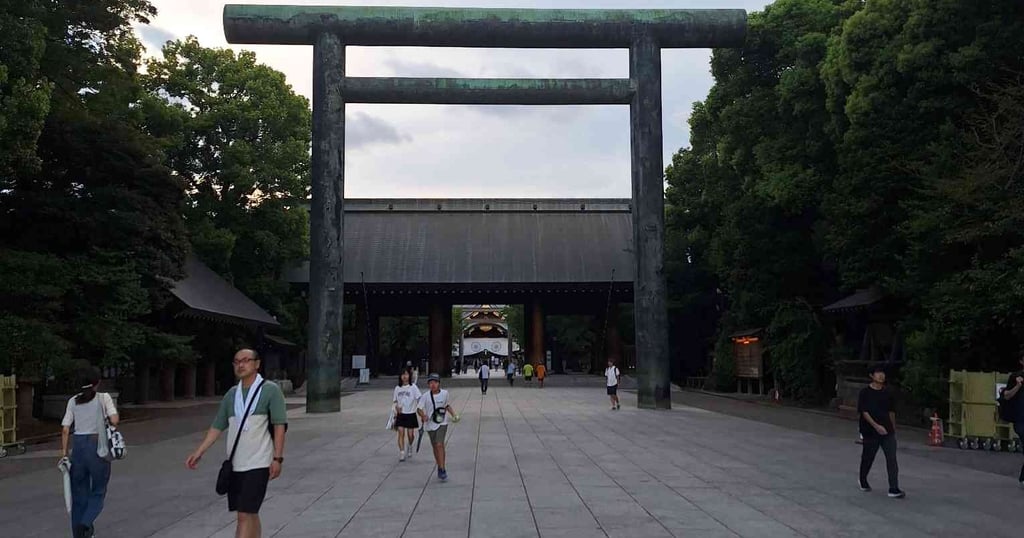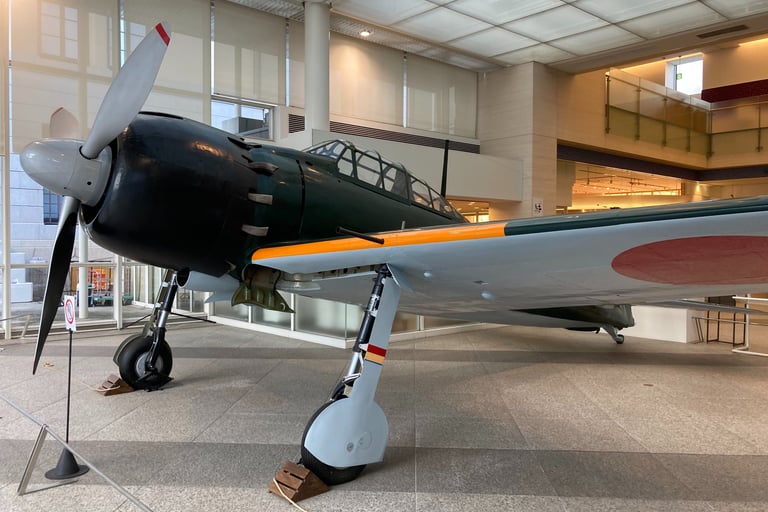What's Stopping You? Change Your Life!
Three Quiet Moments at Yushukan
On Quiet Participation
JAPAN
9/24/20253 min read


When I first considered writing about Yasukuni Shrine and the Yūshūkan War Museum, my plan was simple: to casually observe some war artifacts. As an amateur historian—like many men my age (the joke goes we either revisit history lessons or take up woodworking)—I’ve strolled through more than a few museums. Usually, it’s a matter of glancing at the displays and reading the occasional plaque nailed beside them.
But Yūshūkan is different.
After entering through the enormous torii gates and paying respect, there was a long walk to the shrine itself. Standing before it, one is immediately struck by the enormity of the structure: imposing, graceful, serious. The gravel path hushes each step; a ribbon of incense threads the air. Inside the museum, history doesn’t shout—it accumulates. Photographs, letters, uniforms, and finally, a plane that seems to pause the room. The captions speak, but what I remember most are the people who came to listen.
There is an exhibit dedicated to the pilots of Tokubetsu Kogekitai or "the Special Attack Unit" whose pilots we came to know as Kamikaze or "divine wind" a reference to the typhoons that, according to legend, saved Japan from Mongol invasions in the 13th century. In front of the kamikaze exhibit, a middle-aged man was standing with his hands folded, reading the biographies of the short lives described on the wall. Tears came, but they were the quiet kind that request "please no witness". I kept my distance and let the silence belong to him. The display is about young men and impossible choices. All I can do, as a traveler with no explanation to offer, is wait—and resist the impulse to explain.
A few galleries later, is a collection of letters written by soldiers, sailors and pilots whose destiny wont allow them to return home. There was a woman sobbing into a small blue handkerchief as she read their final words held here behind glass, ink slowly fading. She tried repeatedly to compose herself. Whatever your politics, whatever your textbooks said, grief is fluent; it needs no translation.
Museums are shared rooms, but they are also private theaters. I stood amongst souls who didn't live those moments as they unfolded, but, still felt the pain so many years later. Watching another person’s pain can feel intrusive. The best I could do is give space and let people who belong to the story set the tone for those of us passing through.
The museum’s last turn opens into the lobby, and there it is: the Mitsubishi A6M Zero. It's one of the few remaining examples of a Zero. It's intact but no longer is capable of flying, yet it now serves as a place holder in history. There was a man facing the plane, uttering prayers softly. His voice tight with emotion. In that moment I think I understood this was quiet place of reflection. We all understand. History is not only the artifact—it’s the current running through the people who encounter it.
It was and it remains an emotional place to have been or even to this day to reflect back upon. Yūshūkan contains narratives debated beyond its walls.. A visit to Yushukan gives the traveler much to ponder. The honest thing to do is simply to notice how the past continues to shape people and places. To see how locals are affected, and allow that to shape your pace, your volume, your questions.
Travel is often about seeing things, but it is also about learning to pay attention. You learn to read a room by the way people breathe inside it. You learn that memory has weight—and that it might not resemble your own. You learn when to step aside and when to re-enter.
Even now, I still walk with those three strangers in my mind. They taught me that Yūshūkan is not just a museum, but a place where the past keeps speaking. My job, as a traveler, is to keep listening.


